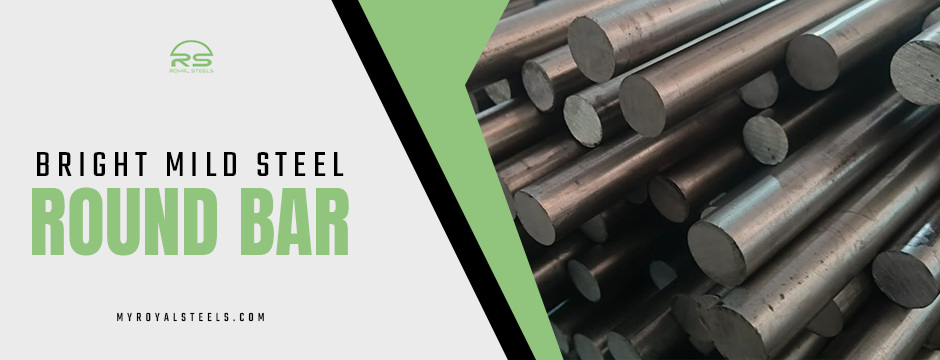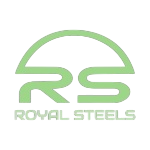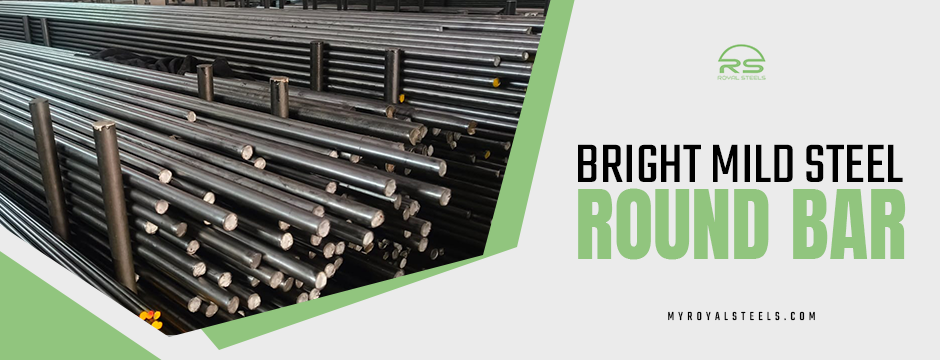It is important to select the appropriate material for machining projects to ensure machining results that are accurate, efficient, and economical. There are many materials available for projects, but bright mild steel round bar has become a popular option because of its broad machinability characteristics and consistency. If you work in automotive, construction, furniture, general fabrication, fastener production or other areas, the combination of strength and workability makes this type of steel very flexible.
Bright mild steel is shaped using a cold-drawn or turned process, which yields a superb “bright” finish and tolerances with a high degree of dimensional accuracy. Expect this for machining specifications when tolerances are less negotiable. But is it the best material for machining, or could something else work better depending on the application? This blog will explore mild steel round bar to further understand the characteristics, benefits and maybe even shortcomings of using bright mild round bar in comparison with other materials commonly used for machining.
Key Characteristics That Make It Machining-Friendly
Superb Surface Finish
The smooth surface of a bright mild steel round bar decreases tool wear and friction during machining operations. This results in longer tool life and more precise cuts, especially when used with CNC machines and lathes.
Dimensional Accuracy
Cold drawing or turning enhances the round bar’s uniform diameter, thereby minimizing the need for extra finishing and reducing material waste.
Softness and Malleability
Mild steel’s lower hardness allows it to be readily cut, drilled, or milled, even into complex or intricate components.
Uniformity
Bright bars possess uniform mechanical properties which are important for high-volume production runs or parts meeting strict specifications.
Benefits of Machining with Bright Mild Steel
Affordability
Bright Mild Steel is relatively cheap in comparison to alloy steels or stainless steel, making it an excellent option for projects with budget constraints.
Quick Turnaround
Bright, mild steel machining leads to faster production times, maintaining efficiencies in manufacturing processes.
Weldable and Formable
The ability to weld the components made of bright mild steel, or to bend and perform further fabrication after machining, without compromising the integrity of the structure.
Good Strength
Although it is not the strongest steel, it is satisfactory for general engineering purposes.
Common Applications
Bright Mild Steel Round Bar are extensive across industries in:
- Automotive components (shaft, studs, bolts)
- Furniture manufacturing
- General engineering Machinery parts
- Fabrication works
- Fasteners
The broad usage and familiarity across industries signal versatility and reliability as a machining material.
How Does It Hold up Against Other Machining Materials?

Against Stainless Steel
Advantages: Easier to machine, lower cost, more ductile.
Disadvantages: Less corrosion resistant, lower tensile strength.
Versus Aluminum
Pros: Stronger, better heat resistance.
Cons: Heavier, not as corrosion resistant in many cases without coating, possibly slower machining speed in some applications.
Versus High Carbon Steel
Pros: Easier to machine, doesn’t require tooling of higher quality.
Cons: Less hardness, not appropriate for higher-stress applications.
When cherished surface finish, precision, and moderate strength, bright mild steel provides the best combination. It may not be the right choice, however, when corrosion resistance and/or high tensile strength is a priority.
Considerations When Using Bright Mild Steel Round Bar
Although bright mild steel bar excels in many machining application scenarios, it does have limitations of which to be aware:
- Rust: It is susceptible to rust when unprotected or untreated, particularly when exposed to humid or marine environments.
- Less Strength: For high-load or high-impact applications, other steels may be more suitable.
- Not Suitable for Elevated Temperature: Mild steel becomes weaker and can bend when subjected to high temperatures.
That being said, surface finishes, such as galvanizing, painting or powder coating, can greatly enhance the properties of the bright steel round bar to allow for its use in adverse conditions.
Recommendations for Machining Bright Steel Round Bar
- Use Sharp Tools. This will minimize burring and provide a cleaner cut.
- Utilize moderate speeds. This will reduce wear on the tool and prevent overheating.
- Use a lubricant. Using lubricant will increase the life of the tool and improve surface finish.
- Look for Surface Defects. Bright bars occasionally have minor surface imperfections—always inspect the bar before machining.
- Ensure Proper Clamping. Proper clamping helps improve the accuracy of the part and the safety of the operator.
Final Thoughts
Bright Mild Steel Round Bar is undoubtedly one of the best machining materials, offering a sweet spot between affordability, machinability, and surface finish. Whether you’re prototyping or mass-producing, their performance and ease of use can significantly boost your operational efficiency.
If you’re looking for premium-grade, bright, mild steel round bars that meet industry standards and deliver consistent results, look no further than Royal Steels. As a trusted supplier, we provide high-quality materials tailored to your exact needs—whether you’re in automotive, construction, or general manufacturing. Visit our website today and explore our range of round steel bars for your machining projects.

